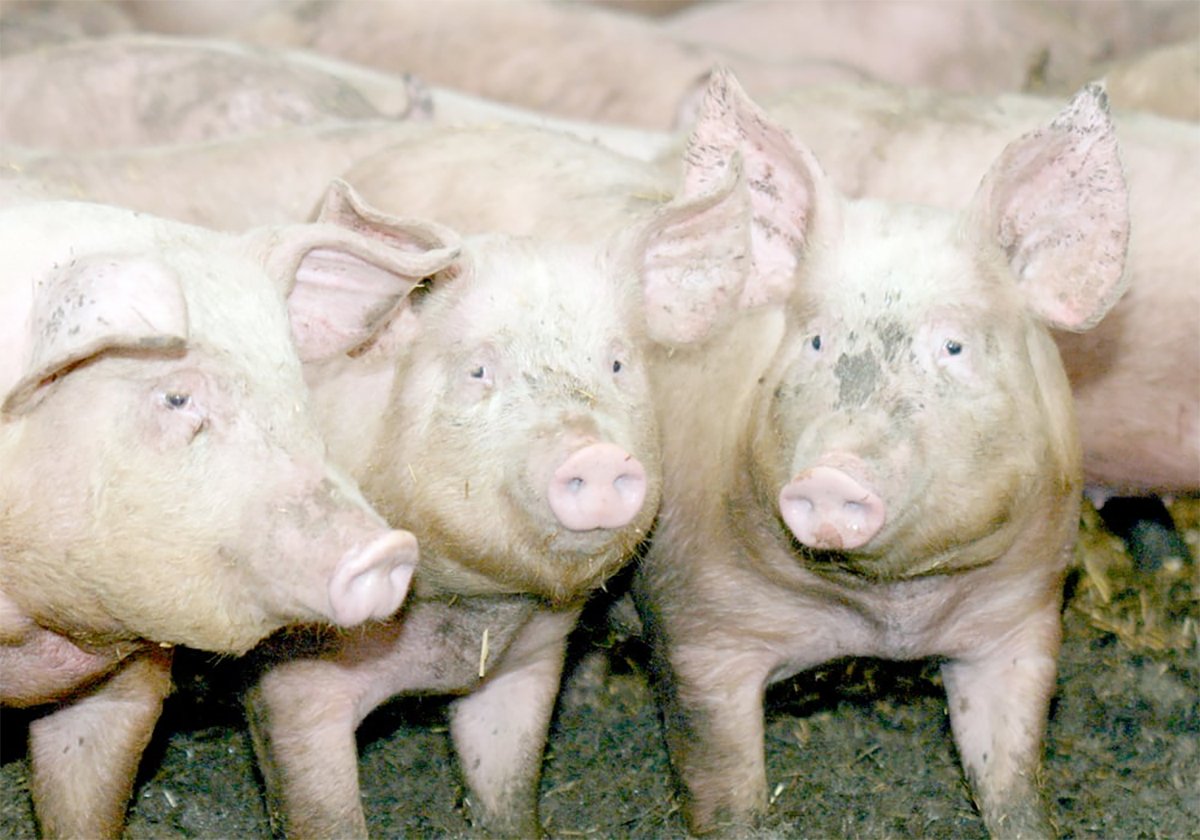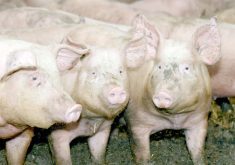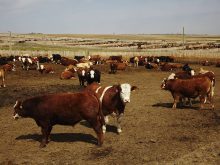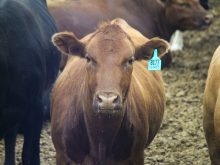An extensive investigation has been launched into the history of an eight-year-old Holstein diagnosed with BSE on Jan. 2. It is Canada’s second home-grown case.
The cow was born in 1996 and lived on three farms in Alberta. The Canadian Food Inspection Agency is tracing its calves and herd mates, as well as potential feed sources believed to have caused the disease.
In 1997 a regulation banned the use of ruminant protein byproducts in cattle rations, eliminating feed as a source of BSE.
The cow’s owner, whose identity was not revealed by the CFIA, reported the downed animal to a private veterinarian who collected a brain sample and submitted it for testing in the national BSE surveillance program.
Read Also

The Western Producer Livestock Report – November 13, 2025
Western Producer Livestock Report for November 13, 2025. See U.S. & Canadian hog prices, Canadian bison & lamb market data and sales insights.
The diagnosis was confirmed Jan. 2 using the gold standard diagnostic test at the Canadian Science Centre for Human and Animal Health in Winnipeg.
“We are not able to release any information about the identity of any of the people involved in our investigation,” said CFIA veterinarian Gary Little Jan. 3.
All cattle on the cow’s farm of origin have been quarantined and the owner has provided inspectors with detailed records of all animals raised there. There are about 200 head on the farm.
This traceback is expected to run smoothly because of good records, the CFIA said. However, the quarantine could expand as inspectors learn more.
The number of animals likely to be euthanized and tested is expected to be lower than in 2003, when more than 2,000 were destroyed.
Cow’s history
The agency is looking for herd offspring from 2003 and 2004. The BSE cow’s 2004 calf is known to have died. Calves born before that are not of concern.
Investigators are also looking for animals born in the same herd between 1995 and 1997.
“We are also examining how and what this animal was fed early in its life. However, given the time period in which we are interested, we may not be able to identify any particular feed source as being the origin of infection,” Little said.
It is not known whether there were any links between this and the previous case.
No part of the animal entered the human food or animal feed systems. The carcass has been sent to federal laboratories for further research.
Federal agriculture minister Andy Mitchell spoke with American agriculture secretary Ann Veneman and gained assurances that this situation will not stall the resumption of live animal trade in March.
(See Officials trace new BSE, page 2)
This is the second BSE case found in Canada. The first case, involving a beef cow from northern Alberta, was announced on May 20, 2003. Another case that traced back to an Alberta farm was detected in Washington state Dec. 23, 2003.
Since the first case was found, the CFIA predicted more cases would be discovered because testing had increased.
Canadian officials believe there is a low level of infection in the domestic herd and that over time the disease will be eradicated because of the feed ban. Consumers are protected because packers now remove the material believed to carry the highest degree of infection from slaughtered animals older than 30 months.
“It was not unexpected that a low level and a declining level of BSE would be evident in the North American herd reflecting the measures that were taken in 1997 to put a feed ban in place,” said Mitchell.
Canada tested more than 22,000 cattle in 2004, most of which fit into the category of dying, diseased, down or dead.
That level of surveillance exceeds international requirements, said Rob McNabb of the Canadian Cattlemen’s Association. And, with a payment program attached to encourage farmers and veterinarians to report suspect cases, testing increased.
“The message that was brought out is that there is a greater risk to our access to markets and our confidence by not meeting our surveillance targets than in meeting it and finding some of these additional cases,” McNabb said.
Status remains
Another case of BSE does not change Canada’s minimal risk status. According to international animal health guidelines, a country can have up to two cases of BSE per million head of cattle in a 12 month period and retain its minimal risk status. In Canada, that would equate to 12 cases per year.
Canadian officials are updating the Japanese on this latest development. The Japanese say the U.S. and Canadian beef industries are integrated, so trade resumption is likely to happen for both countries at the same time.
“Logically it shouldn’t impact anything that is being negotiated,” said McNabb.
“This animal was way over the age that Japan is concerned with, so it is just a matter of what we have to do to meet their negotiated requirements.”















